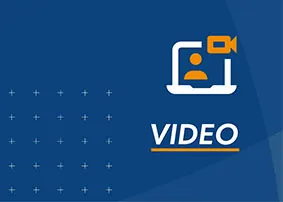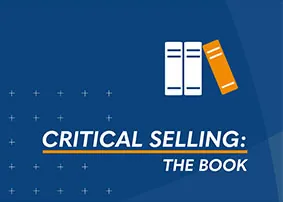Winning a Virtual Discovery Call

In the shift to virtual selling, many sales professionals were taken by surprise. They were simply not accustomed to working virtually through all stages of the sales process, and they were not prepared for the unique challenges this presented. One area, in particular, is discovery. While the process is similar to in-person meetings, there are some differences in how discovery unfolds virtually. Done right, virtual discovery can be much more effective than a phone call. Here are a few tips to get the most out of your next virtual discovery call:
Building Trust
One advantage of embarking on a virtual discovery call via video conferencing is that it provides greater opportunity to see and share body language, which helps sales professionals more deeply bond with prospects. It is easier to create connections with video than it is on the phone. Much of this is simply making eye contact. Like the handshake of simpler, bygone times, eye contact helps us relate to and connect with a client we hope to deal with. It’s like an unspoken agreement between gentlefolk. With phone calls, a talented sales rep could infuse a smile into their voice, but with a virtual call, you can smile, nod, and engage in the genuine interaction that helps build trust.
Set the Agenda
In discovery, it’s vital sales reps set the agenda and expectations. It’s like huddling with your team to set the play except, in this case, the team is your contact and the other stakeholders with whom you are meeting. Outlining the expectations lets everyone know the steps you will be taking so they can follow the process. It also helps confirm the customer shares these expectations. For example, sales professionals could start by saying, “I’ve assembled some questions following our last call and would like to begin with those so I can better understand your objectives. After that, I’ll present some specific solutions that will address your needs.” Of course, this is cumbersome on a phone call, especially with multiple decision makers. A virtual discovery call allows the sales rep to seek and receive the unspoken buy-in from each participant as he or she goes through the process.
Pace Your Questions
On a virtual call, it’s easier to maintain a comfortable pace for your questions. As discovery is about asking the necessary open-ended questions that provide essential insights into the client’s pain points, it can be easy for sale professionals to get ahead of themselves or ask so many questions their discovery feels like an interrogation. Having the ability to see and interact with the decision makers allows the sales rep to judge facial expressions, which can indicate when a question needs emphasizing or rephrasing or even lets the rep know it’s time to move on. Seeing the group you’re addressing also helps you read the room and anticipate further questions before you wrap up or move the call forward.
Body Language
All sales reps know, along with active listening, you can learn a lot about what a prospect or client is thinking from their non-verbal communication. Many prospects will offer unspoken “tells” that can cue the observant rep into their thinking. Maybe they unconsciously lift an eyebrow when intrigued by something you say. Or they cross and uncross their legs when a pain point becomes a little too literal. In this way, a virtual discovery call can provide the sales rep additional information over a phone call. And, after all, the very purpose of discovery is to uncover as much information as possible in order to provide the best solution.
While the shift into virtual selling was abrupt and difficult, many sales teams have come to embrace the changes. Since it seems unlikely we’ll be going back to in-person meetings anytime soon, it’s safe to say that virtual is here to stay. More importantly, however, now that so many sales professionals have adapted to virtual selling, many will no doubt be hesitant to return to in-person, especially when they have so successfully transferred much of their sales process, such as discovery, into virtual. In sales as in life, necessity is the mother of invention, and though many kept virtual at arm’s length before, when it comes to discovery, it can be a sales pro’s best friend.
Comments are closed.

- Account Planning (12)
- Awards (44)
- Client Testimonial (37)
- Personal Branding (21)
- Podcast (12)
- Research (78)
- Sales Career Development (90)
- Sales Coaching (166)
- Sales Consulting (141)
- Sales Culture (180)
- Sales Enablement (382)
- Sales Leadership (116)
- Sales Management (267)
- Sales Negotiation (14)
- Sales Prospecting (138)
- Sales Role-Playing (19)
- Sales Training (243)
- Selling Strategies (281)
- Soft Skills (78)
- Talent Management (101)
- Trusted Advisor (29)
- Virtual Selling (57)
- Webinar (13)


























Being able to communicate effectively not only through words, but also nonverbal cues are so important in creating great partnerships.
Very true — thank you for your feedback, Jerrolyn!